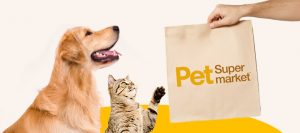You have certainly heard about proprioception (or dog food). But do you really know what it is? What does this discipline consist, how to start, what are its benefits but also its limits and precautions to take? Zoom on this activity as good for the head as for your dog’s body.
Proprioception: What is it?
By definition, the term proprioception refers to the conscious perception or not of the position of the different parts of the body. We could easily compare the practice of proprioception in the dog with that of yoga or pilates in humans.
Indeed, working proprioception makes it possible to stimulate parts of the body that one does not necessarily solicit on a daily basis.
What are the benefits and benefits of proprioception in dogs?
The benefits and benefits of proprioception are numerous; here are some not negligible:
proprioception makes it possible to reinforce the concentration of your dog (including that of the puppy and that of particularly active dogs),
It also considerably reinforces the dog’s musculature through stretching and targeted positioning,
Proprioception helps the dog to become aware of all its members,
As mentioned above, this discipline makes it possible to stimulate unsolicited areas on a daily basis,
This helps the dog to position themselves in space,
Proprioception considerably limits the risk of bone problems,
Practice this discipline allows physical stimulation but also and especially mental: a proprioception session (15 min) is often much richer than a long walk in the forest.
What precautions should be taken?
Consulting No. 1: It is important, even before entering this activity, to visit an animal osteopath so that it validates (or not) the practice of proprioception. In addition, he can tell you which parts of your dog’s body are to work in priority and what are those that require more precautions.
Tip # 2: A small appointment with your veterinarian will not be too much! It will be able to target any pain that your dog does not necessarily express.
Tip # 3: In addition, check well the claws of your dog; they should not be too long to prevent this from having an impact on its bone balance and development. This is mainly the case for dogs still growing.
Consulting No. 4: Of course, it is strongly advised to seek advice from a professional specialized in proprioception or Canine fitness because it will be able to inform you about the beneficial gestures and postures for your dog.
Tip # 5: Then, of course, take your time and especially pleasure! Observe your dog well, and as soon as it shows signs of discomfort (truffles, yawning, etc.), do not hesitate to take a break, including to understand where his malaise comes from: He physics? Do you have an inadequate attitude? Etc.
How to start with the practice of proprioception?
To begin the practice of proprioception (or canine fitness), first of all, you must respect the 5 points mentioned above to go on a good basis.
Then, it is very likely that you have already made proprioception to your dog without even realizing yourself. Indeed, if you taught him to give the paw, do the beautiful, to make salvation (the reverence), turn on himself, back down, or go up and down of an obstacle, then you have already started the job!
Thus, before you start in more technical exercises, do not hesitate to reinforce the small tricks mentioned above and perfect them. The goal here is to go slowly for your dog to realize his body in space. In fact, learn your dog to do these few tricks taking his time, calm and concentration. Proprioception is not a speed of the speed; on the contrary: it is better to exercise slowly to work all targeted areas rather than smiling and risking injury.
Moreover, even if the proprioception often requires a specific material, if you do not want to invest right away, you can practice it in everyday life, especially in the forest in the forest or at home with this that you have on hand.
However, if you want to make this activity a regular discipline to offer your dog, it is still advisable to invest in solid equipment provided for this purpose and, therefore, more secure.
Here is a non-exhaustive list of the most common materials to practice proprioception with his dog:
An anti-skid coating (you can use a yoga mat, a piece of carpet or a foam mat),
an equilibrium cushion, otherwise called “balance disc”,
a “traxpeanut”, which is actually a big balloon in the shape of a peanut,
a “Fit Bone”, which is a bone cushion,
“Paw pods” are small structures that you place on the ground so that your dog put his four legs on it (this allows to work the independence of the paws),
a balance board,
Small obstacle bars (cavaletti) to help your dog work not only his stride but also the independence of his four legs.
Finally, to start well, the ideal is always to participate in an internship supervised by a professional of the Canine fitness so that it gives you all the keys to start serenely.
The Canine Fitness: for which dogs?
The advantage of this discipline is that it is not discriminating and concerns all dogs. From the moment you have a dog, whatever his age, race, size or physical condition, proprioception can only make it good (only if the exercises are well done, obviously).
However, this activity is particularly recommended for sports dogs, older dogs, puppies in times of growth but also a little too turbulent dogs that have difficulty concentrating.
To conclude, your dog will be much better in his paws and in his body if he knows how to use it and that he is fully aware of his positioning in space. Do not hesitate, launch and allow your dog, through this activity as physical as mental, to flourish fully.



